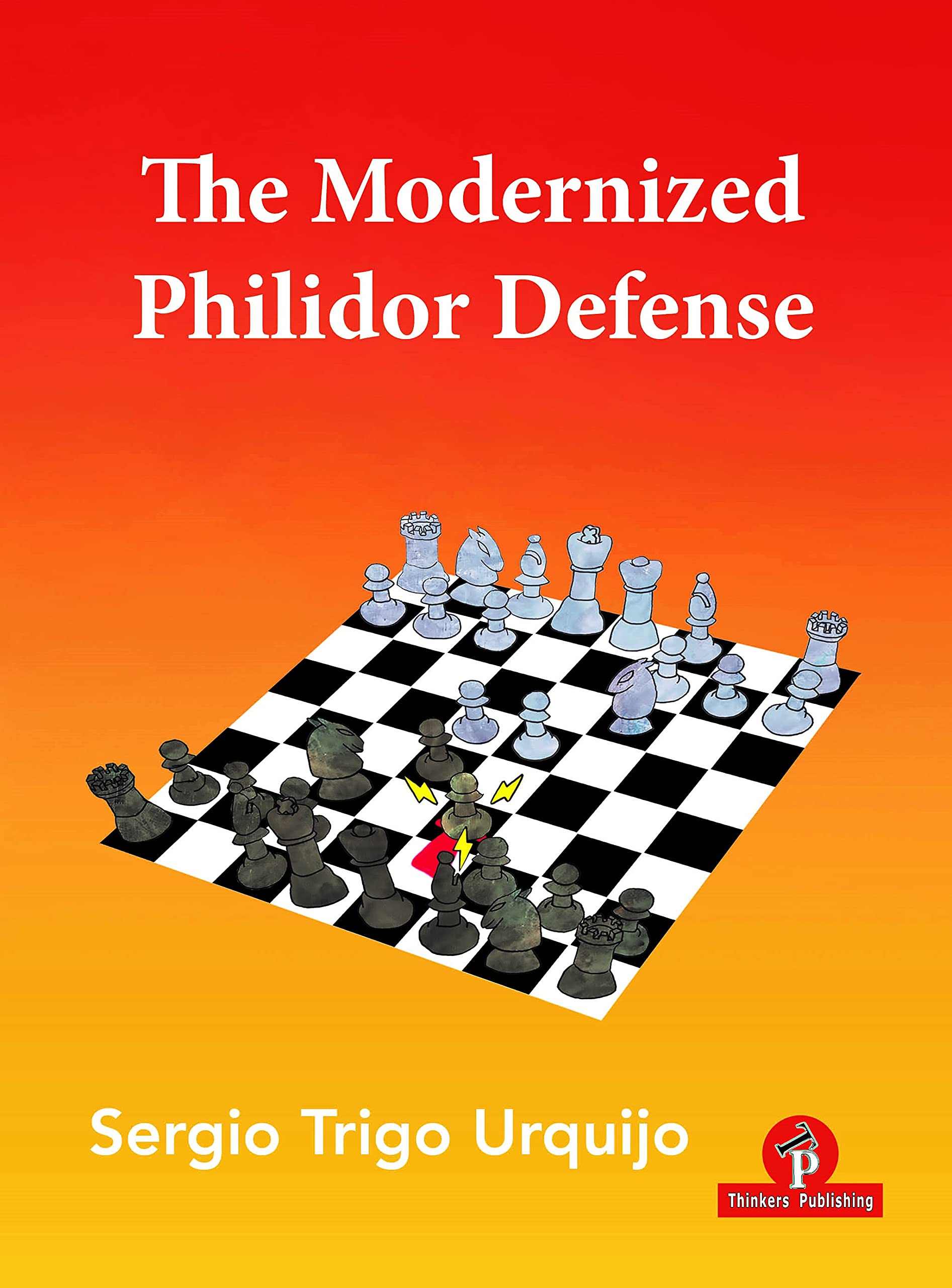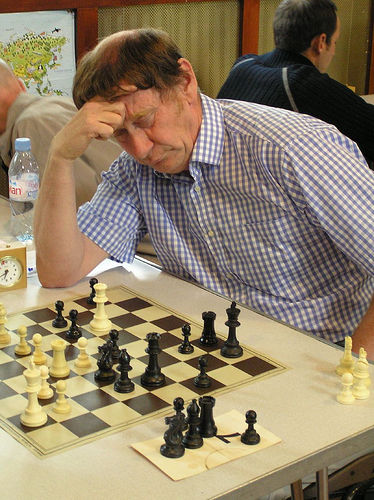
Here is the publishers blurb from the rear cover :
“A highly adventurous repertoire designed to meet 1 e4 with 1…e5 and take the initiative! The main problem Black faces in answering 1 e4 with 1…e5 is the plethora of opening systems available to White: the Ruy Lopez, Giuoco Piano, Scotch, Ponziani, King’s Gambit, Vienna, Bishop’s Opening and so on.
Each is likely to be White’s pet line, which usually means conducting the chess battle on the opponent’s turf. One solution is to study the main lines of all these openings and hope to remember what to do if they appear on the board. Another, more enterprising approach is to turn the tables and make White fight on your territory.
Adopting the latter course, CC-SIM Jonathan Tait shares their investigations into a myriad of disregarded, “disreputable” responses, which can set White thinking as early as move three. These lines are greatly under-estimated by contemporary theory and include weird and wonderful variations such as the Calabrese Counter-Gambit (1 e4 e5 2 Bc4 f5), the Wagenbach Defence to the King’s Gambit (1 e4 e5 2 f4 exf4 3 Nf3 h5), the Romanishin Three Knights (1 e4 e5 2 Nf3 Nc6 3 Nc3 Bc5), the Two Knights Ulvestad Variation (1 e4 e5 2 Nf3 Nc6 3 Bc4 Nf6 4 Ng5 d5 5 exd5 b5) and ultra-sharp lines of the Jaenisch Gambit (1 e4 e5 2 Nf3 Nc6 3 Bb5 f5).
The theory of the variations in this book is generally poorly understood. This has made them successful at all forms of play, including against online computer-assisted assault.”
About the author :

“Jonathan Tait is a Senior International Correspondence Chess Master (2002) and editor for Everyman Chess. He has been investigating and writing about opening theory for over 30 years.”
As with every recent Everyman Chess publication high quality paper is used and the printing is clear. Each diagram is clear as is the instructional text. Figurine algebraic notation is used throughout. The usual and reliable formatting from Brighton-based typesetter IM Byron Jacobs is employed.
The diagrams do not have a “to move” indicator or any kind of caption so you will need to work out for yourself how they relate to the text that they are embedded in. However, this is fairly obvious.
There is a helpful Index of Variations but no Index of completed games.
The table of contents is:

Before we continue it is worth taking a look at the pdf extract which includes the Contents, Preface and pages 242 – 259.
As the years have rolled by repertoire books have struggled to use attractive and eye-catching adjectives to entice readers. In the early days we have had
An Opening Repertoire for Black, for White, for Club Players and variations thereof.
Publishers became more adventurous, for example:
- A Startling Opening Repertoire
- An Attacking Repertoire
- A Surprising Repertoire
- A Killer Chess Opening Repertoire
- A Busy Person’s Opening Repertoire
- A Cunning Opening Repertoire
- An Idiot Proof Opening Repertoire
- A Simple Opening Repertoire
- A Gambit Opening Repertoire
- A Modern Opening Repertoire
- A Blitz Opening Repertoire
- An Explosive Opening Repertoire
- A Rock-Solid Opening Repertoire
but never a dull, tedious or boring or even totally unsound Opening repertoire which we’d say is a matter of regret(!)
Recently, in a search for uniqueness publishers have been venturing in the opposite direction with Coffeehouse Repertoire 1.e4, Volume 1, However, this was anything but coffeehouse and really rather excellent.
So, Everyman has gone all in with “A Disreputable Opening Repertoire” which cannot help but thinking it will stand out(!) at the tournament bookstall: so, what is not to like?
This is a repertoire for the player of Black pieces who wishes to play 1…e5 against the King’s pawn and wishes to allow White to chose their poison. Black is hoping to reply with something yet more toxic.
We kick-off with with the Centre Game (and miscellaneous second moves for White including Nakamura’s 2.Qh5) but it was Chapter Two which caught our eye since we like opening names hitherto unfamiliar. The Calabrese Counter Gambit (apparently named after Greco, “Il Calabrese”) is:
and this, optically at least, fits the description “disreputable” to a tee. Curiosity almost killed the cat and we consulted page 68 of Tony Miles’s favourite opening book by Eric Schiller, Unorthodox Chess Openings who recommends 3.d3! Sadly ES does not provide one of his animal or exotic names for 2..f5.
Scoring 50.6% for Black and being listed as Black’s 7th most popular move (2…Nf6 is the top choice) it has been endorsed by Ivanesivic and 7 “top games” (according to Megabase 2022) have adopted this line. We’d probably outght to ask Bishop’s Opening guru Gary Lane what he thinks of this. There is 22 pages of analysis should you need something unusual against the Bishop’s Opening.
Next up is the Vienna Game and Tait moves away from the “Disreputable” approach and goes Captain Sensible with
and then after 3.Bc4 returns to disreputable form with
which is at least consistent with the previous chapter. Statistically (based on only eight games) this line scores 62% for White OTB and has zero adherents more than once. 3…Nf6 is the reputable move of course.
Here is an unconvincing win by Black in a game when all of Black’s choices from move 4 onwards were the engine’s top choice. It was an ICCF event after all so don’t be surprised by that. There was a recent ICCF all-play-all event populated by ICCF GMs in which every single game was drawn. Of course, in reality, it was an engine vs engine tournament for the middle game onwards once the humans had selected the opening.
Moving on to Chapter Four and Five we reach the good old King’s Gambit, and, we think we know what you are thinking… Does the author recommend
as you might expect?
Well, not exactly..
Against the King’s Bishop’s Gambit the author punts
which makes 76 appearences in MegaBase 2022 versus the 1000 odd each of 3…Nf6 and 3…Qh4+. Quite unexpectedly we find that 3…f5?! has scored 62.5% for Black with two of the four “top” games coming from 1875 and 1876 between James Mason and Henry Bird. It has not been examined at exalted levels.
Chapter Five brings us up to the King’s Knights Gambit and possibly the most disreputable suggestion of the book via the Williams-esque and wonderfully named Wagenbach Defence. If you were thinking of reaching for Korchnoi and Zak (well, mostly Zak) then we can save you the trouble of looking. The Wagenbach Defence is so-named after BBC featured Mansfield amateur player (JT team mate) János Wagenbach:

and we are treated to 47 pages of original analysis mostly based on online games from various servers. One of our favourite positions of this detailed work is:
which we hope you also will appreciate and enjoy.
Arriving at Chapter Six we enter territory after
and potentially more reputable lines in which Tait recommends 3…d5 versus the Ponziani, 4…d5 versus the Goring Gambit and 3…Bc5!? against the Three Knights Game. All very sensible.
The chapter on the Scotch game revolves around
with 29 pages of analysis.
Removing one knight we move on to the Two Knight’s Defence
in Chapters eight and nine with 47 pages of analysis recommending the Ulvestad Variation in lieu of the Traxler Counter Attack which has apparently fallen on hard times in the exalted world of correspondence and engine chess.
For those unfamiliar with the Ulvestad this we have this position
which has had 1775 outings in Megabase 2022 compared with a whopping 12063 for 5…Na5. 5…b5 scores an encouraging 51.3% for Black whereas 5…Na5 scores 51.3% for White and has an army of highly rated exponents as you’d expect being the mainstream reply.
The books encore lies in Chapters 10 and 11 in which the author gives his recommended treatment of the Ruy Lopez by predictably promoting the Schliemann Defence or Jaenisch Gambit as JT refers.
After examining White’s lesser four move alternatives in Chapter 10 we come to Chapter 11 and 4.Nc3 in which everything is really rather mainstream and, dare we say it, reputable. Tait recommends that Black steers by way of 5…d5 and 9.f4 to the following Tabiya for 3…f5 followers and fans:
in which White has tried many 16th move alternatives with varying degrees of success.
Jonathan has amassed a massive body of games to source the material for his book. The bulk of them it would seem are from the worlds of online chess and correspondence games and a huge number are of his own making under the handle of tsmenace. The analysis is thorough and makes much use of engine analysis as well as human.
JTs prose is chatty and amusing and certainly keeps the reader engaged. We learnt a fair bit about the history and development of these lines many of which has not found its way into the mainstream literature.
The repertoire is highly pragmatic and provocative and ideal for use against opponents who become “emotional” when their opponent plays something that they consider to be “unsound”, whatever that means.
In many ways the books title would have been more accurately titled “A Coffeehouse Opening Repertoire” as used by John Shaw for the books by Gawain Jones but they were published somewhat earlier.
If the second player studies the author’s recommendations well and is of the mindset that enjoys these kinds of positions then some amusing games will result and no doubt some unexpected scalps collected. After all, at club level chess must be fun and this book certainly encourages the second player to pump up the excitement levels. Most definitely a strong repertoire for blitz and rapid play time controls.
If you do play 1…e5 versus the King’s pawn then you could easily freshen up your repertoire with at least some of the books recommendations. Make it a late New Years resolution!
John Upham, Cove, Hampshire, 10th February, 2022

Book Details :
- Paperback : 360 pages
- Publisher: Everyman Chess (14 Jan. 2022)
- Language: English
- ISBN-10:178194606X
- ISBN-13:978-1781946060
- Product Dimensions: 17.3 x 1.7 x 23.8 cm
Official web site of Everyman Chess

























